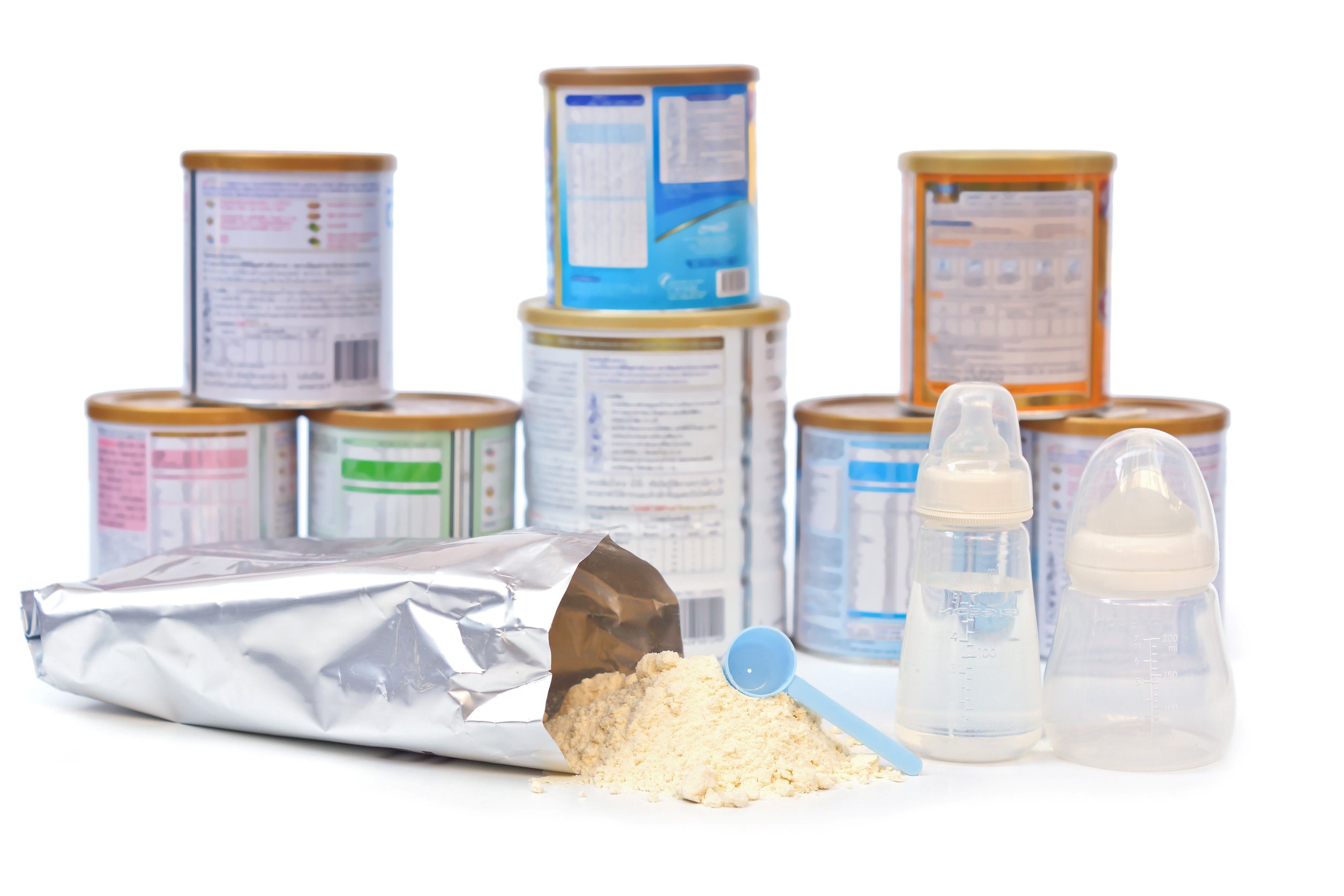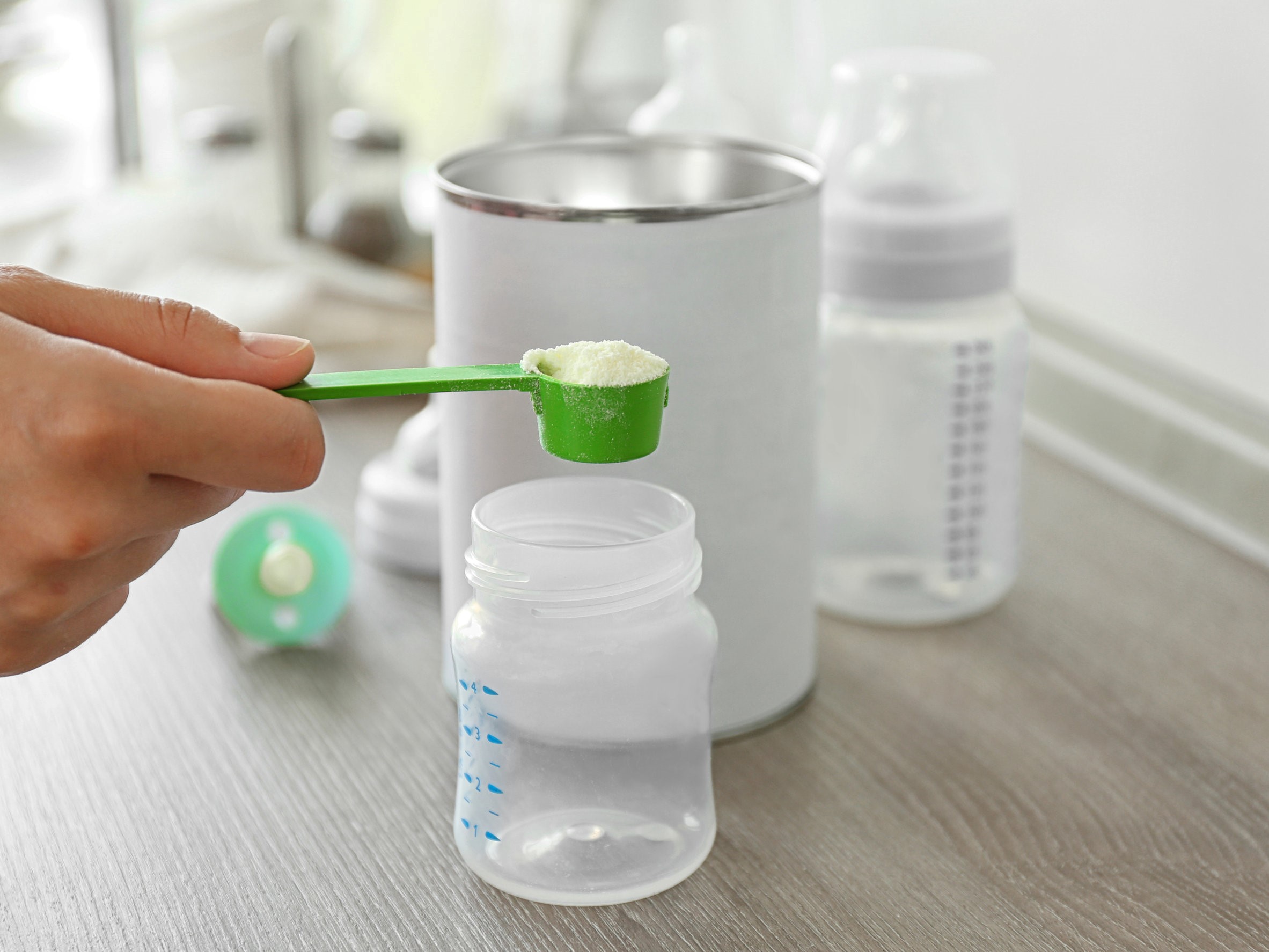Infants almost always prefer breastmilk when feeding, but for some moms that isn’t a safe option. That leaves formula as the only feasible choice. Your infant won’t like that change at all, but a few small tweaks can make their baby formula taste so much better.
Babies can taste the difference, so make sure you find formula brands closest in taste to breastmilk. Be sure to follow provided preparation instructions to the letter. When heating, temper milk gently with steam or warm water. Dispose of any expired formula promptly.
They can also smell when the real thing is nearby, so it’s worth having someone other than the mother feeding them formula when starting off. You can also mix some breastmilk into their formula to give them that familiarity, but this needs to be done carefully to avoid overconcentration of nutrients – improper mixes could damage their kidneys.
The first step is figuring out what brand of formula works best for them. We’ve included some criteria to check for that below, along with a few other tips and tricks to make baby formula taste better for your infant.
How to Make Baby Formula Taste Better?
1. Look for Formula Brands Closest To Breastmilk

While breastmilk ends up subject to changing in flavor with the mother’s diet, there’s still some degree of consistency to it that’s tied to the mom producing the breastmilk. It’s unique but still varied – think of it as a family recipe in a way – and the formula is unlikely to match that for them.
They can get pretty close, though. The right formula brand for them depends on both their medical history and dietary needs, so be sure to consult with your pediatrician for their recommendations.
On a general basis, we can recommend Enfamil Enspire – it’s notable for providing lactoferrin, which is a key protein in breastmilk most commercial brands don’t have. Lactoferrin is antiviral, antimicrobial, and bolsters a baby’s iron absorption capability.
Make Sure The Formula Isn’t Upsetting Their Bodies
Even vetted brands of baby formula can lead to complications for some infants. While the risk of that is small, it cannot be discounted – babies have very sensitive stomachs. If they’re burping, crying, or pooping more often after taking the formula, it’s in your best interest to drop that brand.
They might also be allergic to some components in the formula. Common symptoms of allergies include rashes, swelling, vomiting, colds, and difficulty breathing. Be on the lookout for any adverse reactions cropping up, and make sure to report any issues to your pediatrician immediately.
2. Prepare the Formula Properly

Follow the instructions on formula preparation to the letter. Babies have underdeveloped kidneys, and skewing the mix with too much or too little formula could jeopardize their health – more of that will be discussed later on. Be sure to disinfect your hands before handling liquid or powder formula to avoid contamination risks.
On a less urgent note, contamination also risks compromising the flavor of their milk. Infants aren’t very receptive to changes as is, so you want to pull out all the stops to ensure you can improve the taste of their baby formula.
Heating
Proper warming makes a huge impact on improving the taste of baby formula. Warming the bottle needs to be done gently – you’re trying to reach body temperature here, rather than temperatures we might expect warming coffee or tea. Baby formula tastes much better for them this way.
Too much heat denatures the milk, getting rid of vitamins, enzymes, and fat that the baby needed. It also runs the risk of heating unevenly, leaving concentrated warm spots that could scald your baby’s mouth. This not only hurts them but also ends up making them dislike bottle feeding – and formula, by extension – even more.
There are dedicated bottle warmers in the market, but you can manage with a big mug and some water just fine. It’s as simple as placing the baby bottle inside the water-filled mug for fifteen minutes! Temperature is very important here, so make sure you strike a good balance. It should be warm but not hot – just to the point you can stick your hand in the water comfortably.
What you should never do is use a microwave. Even the best ones heat unevenly, so your baby’s feeding experience would be an uncomfortable mix of ice-cold milk interspersed with painful pockets of heat. It would be better to just microwave the water you’ll use to heat the formula but even then you’d get better results just using a kettle.
What To Do With Expired Formula
If it’s just slightly past the expiration date, the nutrients in the formula will be insufficient for your child’s needs. If it’s severely past that point, you risk giving your infant food poisoning along with the undernutrition risk. Dispose of any expired baby formula promptly to avoid potential mishaps.
While you could throw it in the trash, many animal shelters also use baby formula – expired or otherwise – as a nutritional supplement. Your expired milk could help nurse a sick animal back to health, so consider donating rather than binning your expired formula.
3. Have Someone Else Feed Them Formula

While it might seem better for mommy to take point nursing their baby, it actually inhibits how smoothly they’ll take to formula. Babies can smell breastmilk even if they aren’t being nursed, and will be much less receptive to formula when close to their mothers. If your baby is still used to nursing, that’ll also get in the way of you transitioning them towards bottle-fed formula.
When making the switch, try having their partner or other family members feed them on occasion. Some babies can be very attached to their mothers, crying when out of their presence when feeding. We’d recommend giving the feeder something with mom’s scent – a shirt or blanket to wrap around the feeding baby is a great choice to soothe them.
How to Bottle Feed Properly
Make sure you only start bottle-feeding when they’re not too hungry. The first bottle feedings are used to gauge how much milk they need, so offer them modest quantities when starting.
Add more over time, but only up to the point where they show signs of fullness. Never force your baby to finish the bottle – refrigerate what’s left for their next meal instead.
When bottle-feeding, be sure to angle the bottle nipple rather than keep it directly down. Doing the latter is a choking hazard – milk should only come out when your child sucks the bottle’s teat. If your baby pulls away or releases the bottle, wait to see if they wanted a break or to stop entirely.
Lastly, bottle feeding positions are very different from breastfeeding positions. Try to see what position makes them most comfortable rather than emulating how their mother holds them.
4. (Carefully) Add Breastmilk To Their Formula
While babies definitely prefer breastmilk, it’s the transition into formula rather than the formula itself that throws them off.
You can retain some familiarity by mixing your breastmilk with baby formula. It’s a nice way to wean them off breastmilk without the change jarring them too abruptly, while also allowing you to make baby formula taste better for your little one.
We stress carefully because improper combinations of formula and breastmilk can be bad for their health. Breastmilk and formula are carefully managed with a certain nutritional balance – they need to be mixed properly to ensure the end result is safe to drink for your infant. It’s well worth the effort to make better-tasting baby formula your baby will love.
Only mix liquid formula with breastmilk. Powdered formula dissolved in water is fine for this. What you need to avoid is directly adding powdered formula to breastmilk. It’s not the same as combining two liquid parts, and doing this will cause a nutritional spike in concentration that could easily compromise their underdeveloped kidneys.
Other than demanding more caution, this method is one of the more effective ways to make baby formula taste better. Simply skew the ratio of breastmilk and formula towards the latter, bit by bit, and eventually, they’ll get used to the taste with minimal fuss.
Final Thoughts
It can be challenging for your baby to go from breastmilk to formula, but the bulk of that struggle is from the change itself rather than the formula. There are a ton of ways to make baby formula taste better, so just keep at it until your child gets used to the transition.